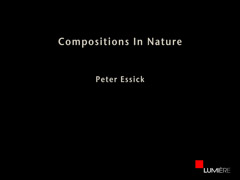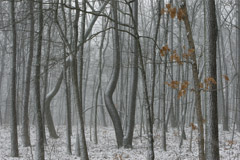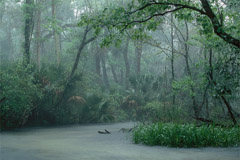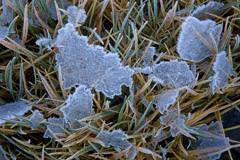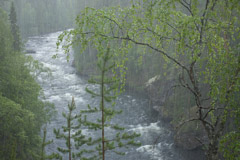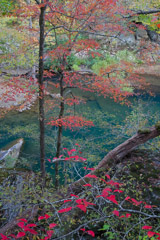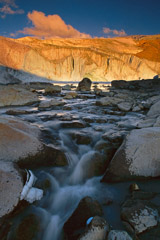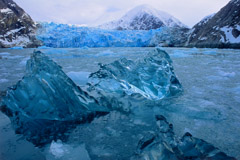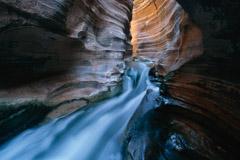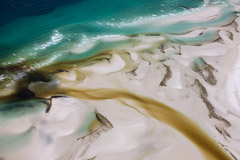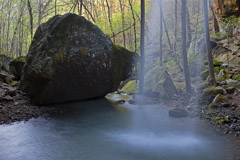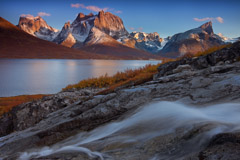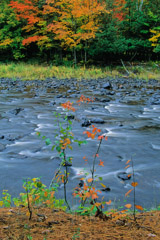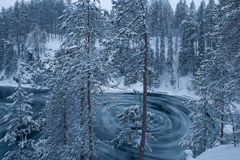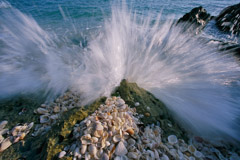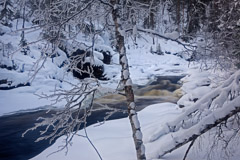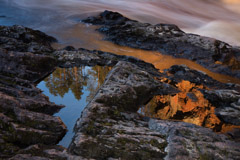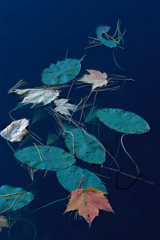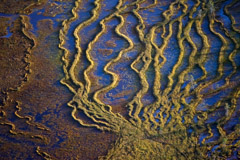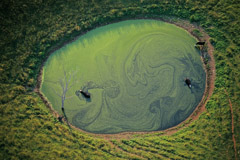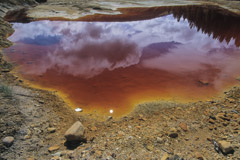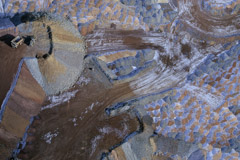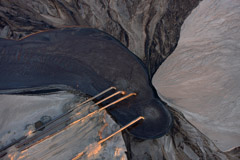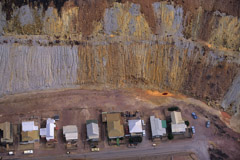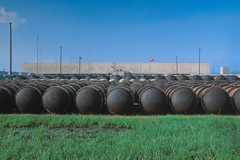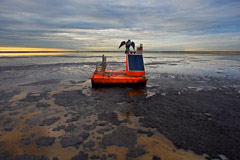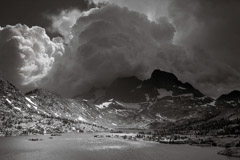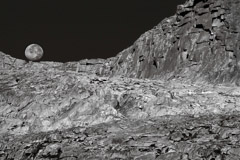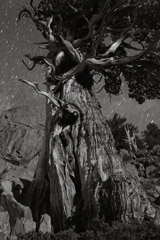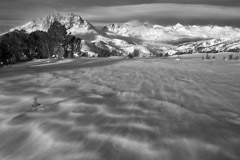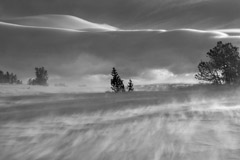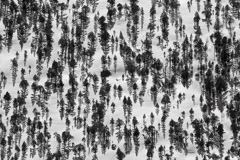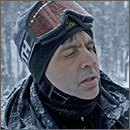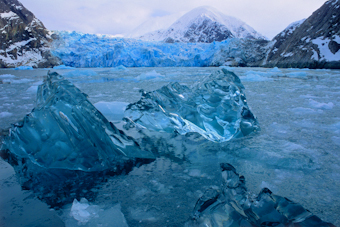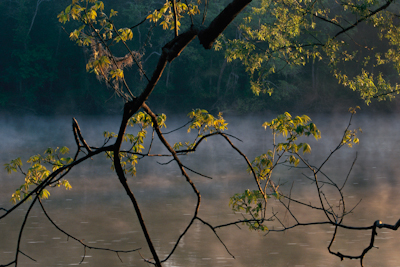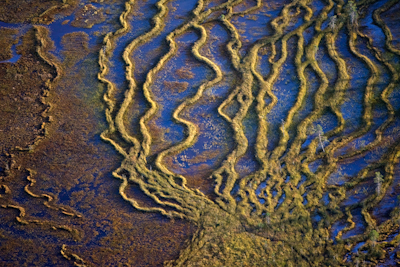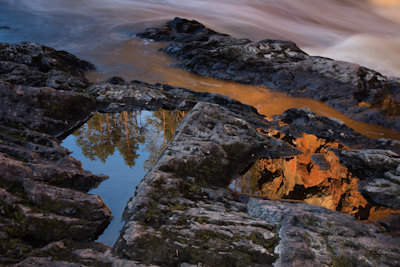Compositions In Nature
Photographs by: Peter Essick
Award winning photographer Peter Essick has traveled to landmark settings throughout the world to capture the stunning
spiritual and artistic power of nature. His images reflect a visual acuity and a deep sense for the qualities of light.
Essick’s photography has been a key element in over 30 National Geographic articles.
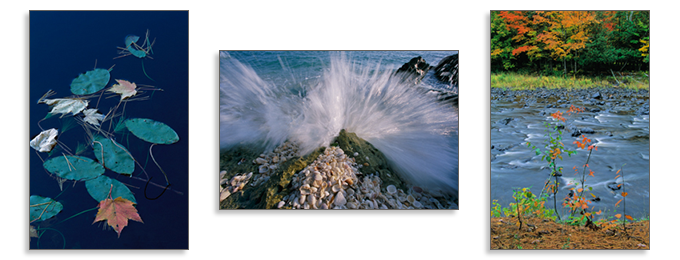
I have never tired of photographing nature nor felt like I did not have anything new to say.
To me the world of nature is limitless. – Peter Essick
Featured in this exhibition is the work of Peter Essick.
Select this link to view his complete artist page.
Peter Essick is a photographer, author, speaker, instructor, and drone pilot who specializes in nature and environmental themes, who was named one of the 40 most influential nature photographers in the world by Outdoor Photography Magazine UK. His goal is to make photographs that move beyond mere documentation to reveal in careful compositions the human impact of development as well as the enduring power of the land.
Essick has worked as a freelance photojournalist with clients such as National Geographic Magazine. At the Geographic he has produced more than 33 feature articles on many different topics. These include the June 2010 cover piece on Greenland and the September 2010 story on Fraser Island, Australia. An October 2008 National Geographic article: The Intimate Wild, Ozark Highland Trail, featured Essick’s photographs of the region.
Essick has traveled to all seven continents in search of compelling pictures. Some of his favorite and most rewarding stories have been on inner Japan, the American wilderness, the carbon cycle, global warming, and global freshwater. His story on nuclear waste produced in 2002 won first prize at World Press Photos in Amsterdam.
Away from the magazine world, Essick’s photographs have been included in the “Photography, Man and the Environment” exhibition at Viterbo, Italy, and in the “Thy Brothers’ Keeper” exhibition at the Flint Institute of the Arts, Michigan. In April 2005, Outdoor Photographer magazine did a feature story about Essick’s efforts to photograph the effects of global warming. These photos were also seen on The Oprah Winfrey Show, This Week With George Stephanopoulos, and in the movie An Inconvenient Truth. His photographs have been in Time magazine’s “Great Images of the 20th Century” and in 100 Best Photographs of National Geographic.
![]()
Peter Essick was listed as one of the 40 Most Influential Nature Photographers by Outdoor Photography Magazine (2010). They sited his work for National Geographic Magazine documenting the effects of global warming, placing him twelfth on this list of notable photographers worldwide.
Below are comments by Peter Essick that reveal interesting information on 21 of the images from his exhibition: Compositions in Nature.
 Oulanka National Park, Finland, 2009
Oulanka National Park, Finland, 2009
 White Rock Mountain, Arkansas, 2008
White Rock Mountain, Arkansas, 2008
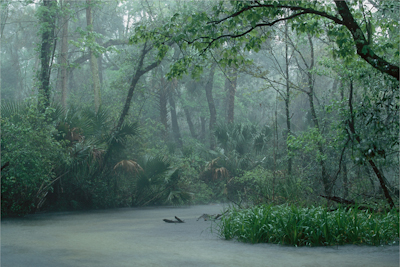 Juniper Prairie Wilderness, Florida, 1998
Juniper Prairie Wilderness, Florida, 1998
This wilderness area north of Orlando is one of the few subtropical rain forests in the United States. To enter the wilderness, I rented a canoe and floated down a spring-fed creek. In the afternoon a heavy downpour occurred as I was taking this photograph. The next day I read that it had rained almost five inches the day before.
The Altamaha in southern Georgia has many unspoiled areas. The old-growth trees were logged in the 1800s, but the Nature Conservancy is now working to preserve many of the remaining forests near the river. This photograph was taken in May when there was some early morning mist. I’m told that if there is a 15 degree F difference between the air and water temperature then the mist occurs.
This spot in northern Arkansas is near the Ozarks Highlands Trail. Tim Ernest, who built the trail along with some other volunteers, met his wife Pam at this grotto and named it for her. There is a large overhang to the cliff so it is easy to walk under the waterfall and look out. At sunrise, there is still enough latitude in the digital sensor to capture both the sunlight on the trees and the shadow of the large rock, something not possible with film.
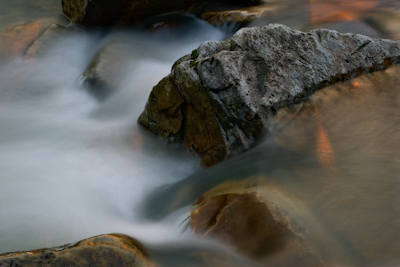 Spirits Creek, Ozark Highlands Trail, Arkansas, 2008
Spirits Creek, Ozark Highlands Trail, Arkansas, 2008
This special place is on the Ozark Highlands Trail. There is a nice camping spot for backpackers nearby. After setting up camp I walked down to the small creek. It was cloudy, but right at sunset a small beam of light shot through the trees on the other side of the creek and lit up the water with a golden glow for a few moments.
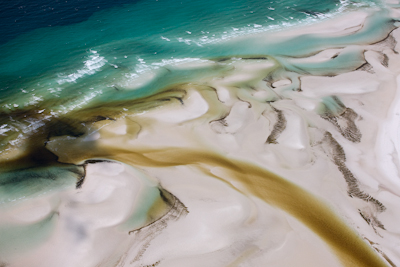 Wathumba Creek Estuary, Fraser Island, Australia, 2009
Wathumba Creek Estuary, Fraser Island, Australia, 2009
Fraser Island off the coast of Queensland is the world’s largest sand island. Along the western shore, the ocean water is very clear blue-green. Wathumba Creek is brown with tannins from the forest in the interior of the island. This aerial photograph was taken at almost low tide. At high tide the creek water backs up and leaves the marks of organic material in the sand.
On a 17-day trip through the Grand Canyon in a wooden dory I climbed up many of the side canyons. Deer Creek was my favorite because the light and dark effects on the narrow walls.
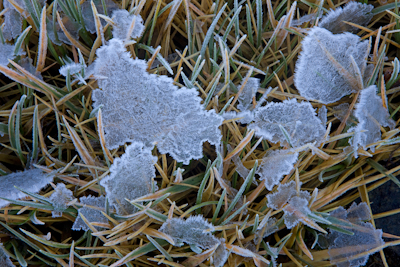 Sea Ice, Tierra del Fuego, Chile, 2009
Sea Ice, Tierra del Fuego, Chile, 2009
A friend of mine who is a National Geographic Photographer was working on a story about the 200th anniversary of the birth of Charles Darwin. He had booked a 10-day trip on a yacht to visit the Beagle Channel where Darwin had visited on his famous voyage. At the last minute, his wife got sick and I filled in for him. This photograph is taken in a very remote area called Seno Pia. In the winter the sea freezes and then breaks up every day with the tide. These sea ice fragments are left in the grass in the high tide zone.
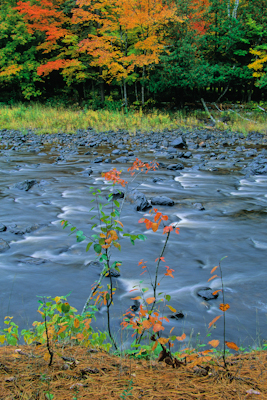 Sturgeon River Gorge, Michigan, 1998
Sturgeon River Gorge, Michigan, 1998
The Upper Peninsula of Michigan or U.P is one of the most unique places in the US. Not only are there superb natural areas like the Sturgeon River Gorge Wilderness, the whole region is refreshingly unspoiled. It is one of the few places in the US where I didn’t see any fast food places or strip malls when I was there in 1998. I wonder if that is still the case?
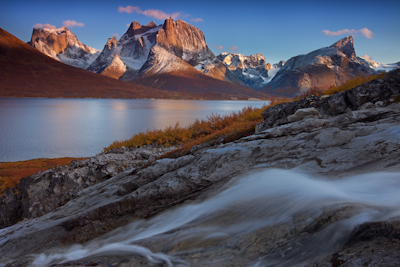 Tasermiut Fiord, Greenland, 2010
Tasermiut Fiord, Greenland, 2010
South Greenland holds tremendous potential for tourism and no place is more scenic than the Tasermuit Fiord. The granite walls are over 3,00 feet high and in several places plunge right into the ocean. However, the logistics to get there are difficult. Last June I had to first fly from the capital Nuuk to Qaqortoq in a prop plane and then take a helicopter further south to Nanortalik. In this small village I hired a local Inuit man to take me up to a campsite up in the fiord. Behind his small motorboat we towed an inflatable boat. After setting up camp, I looked around by myself in the Zodiac boat to find a good location to photograph when the weather was clear. I waited several days for a good sunset, but it never cleared up. I had to come back two months later and eventually got the photograph. The stream in the foreground is freshwater flowing into the ocean in the background.
I was working on a story about the carbon cycle and I read that small animals use calcium carbonate in the ocean to form shells. The perfect place to see shells on the beach was a Sanibel Island in Florida. Every time there is a storm the beach fills up with shells. I used an underwater housing to get close to the wave and the shells while protecting my camera from the salt water.
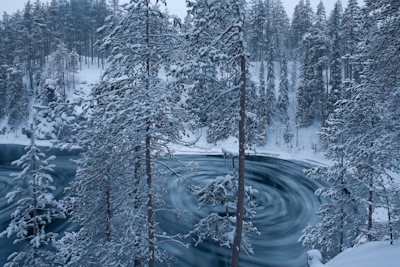 Jyrava Falls, Oulanka National Park, Finland, 2009
Jyrava Falls, Oulanka National Park, Finland, 2009
I arrived at this spot one afternoon and noticed the small icebergs in an eddy of the Kitka River. As I watched it looked like the icebergs were moving in a perfect circle. I came back the next morning and in a 30 second time exposure the circle was revealed in the streaks of the ice.
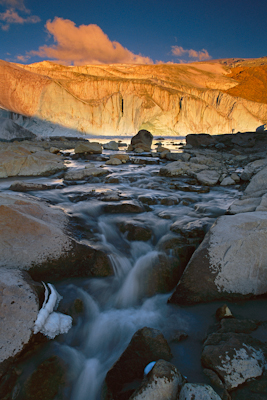 The Quelccaya Ice Cap, Peru, 2004
The Quelccaya Ice Cap, Peru, 2004
Lonnie Thompson, a famous climatologist from Ohio, has studied this ice cap for over 25 years. In that time the ice cap has retreated and shrunk like almost all tropical glaciers around the world. The lake in the foreground first appeared in 1991. The next day after taking this photo I climbed to the top of the ice cap at 18, 600 ft., the highest altitude that I have ever climbed.
These low-lying swampy areas in the northern Boreal Forest were made glaciers during the last ice age. In the 9,000 years since it has been ice-free, some of the drier areas have built up peat ridges. From the air, it is possible to see them and figure the direction of the glacier’s advance and retreat.
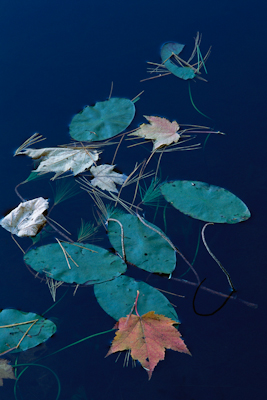 Rainbow Lake Wilderness, Wisconsin, 1998
Rainbow Lake Wilderness, Wisconsin, 1998
This photograph has always reminded me of the randomness of nature. Leaves must fall every year on these lily pads in a small pond in Wisconsin. The placement is probably similar each year, but not exactly the same. As photographers we come by and make what we think is an orderly composition, usually based on an aesthetic that surely was first influenced by the laws of nature itself.
In this shallow dolomite gorge the sunrise light is quite remarkable. The sunlight first hits the pine trees and then the opposite canyon wall. Because the canyon is narrow, the wall acts like a giant reflector card and fills the shadows with a beautiful luminance.
 Sinkhole, Near Bowling Green, Kentucky, 1996
Sinkhole, Near Bowling Green, Kentucky, 1996
One of my first environmental stories I worked on was about non-point source water pollution. I didn’t realize until I started photographing the story how non-visual this problem was. However, I tried to take this as a challenge and do a story that hadn’t been done before. Sinkholes like these in Kentucky act as avenues for pollution to enter the groundwater. Usually these pollutants are invisible, but when I saw these cows wading right in a sinkhole I knew I had found a familiar and visible culprit.
 Oil Sands Tailings, Alberta, Canada, 2009
Oil Sands Tailings, Alberta, Canada, 2009
The oil sands development in northern Alberta is recovering oil in a manner more like a mine than a traditional oil well. The oil sand has to be mixed with water and boiled so the bitumen will rise to the top. The wastewater is then sent to large tailings ponds that create something that looks like a delta as the toxic water enters the huge pond.
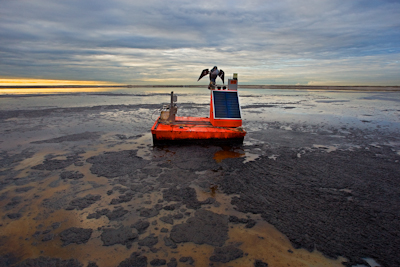 Falcon, Oil Sands Tailing Ponds, Alberta Canada, 2009
Falcon, Oil Sands Tailing Ponds, Alberta Canada, 2009
There was a highly publicized event in 2008 when about 500 migrating ducks landed in an oil sands tailings pond and drowned. In order to try and prevent future occurrences this oil company installed an effigy of a peregrine falcon in a platform on the pond. A laser beam determines if birds are approaching which activates a solar powered recording of the falcon’s call and hopefully scares away the migrating birds.
Peter Essick and his Lumiere exhibition:
Depth of Field: Compositions in Nature – photography by Peter Essick.
Have been featured recently in several venues and on-line.
Serenby Photography Workshop: November 6, 2010
Fall Colors in the Chattahoochee Hill Country – with Peter Essick
Peter led a seasonal photo tour of the beautiful Chattahoochee Hill countryside in and near the Serenbe Community. This was an SPC “Eye on the World” workshop, photographs from the workshop will be used to help protect and preserve the less-traveled beauty of the Chattahoochee River corridor landscape south of Atlanta. For a complete description of the workshop go the Serenby Photography Center web site.
News from The Nature Conservancy:
On September 29, 2010— Governor Sonny Perdue announced the acquisition of 6,911 acres in Long County as part of the Townsend Wildlife Management Area (WMA). The property is located in the lower Altamaha River floodplain, one of the most valuable ecological corridors in Georgia. The Altamaha River is one of The Nature Conservancy priorities and TNC played a key role in this acquisition. In the January 1998 issue of National Geographic magazine the work of Peter Essick’s provided visual support to these efforts with an article: “Altamaha River: The Easy Ways of the Altamaha.” For complete details visit The Nature Conservancy web site.
ArtsCriticATL: reviews, Compositions in Nature
ArtsCriticATL co-founder Catherine Fox provided an insightful review of our current exhibition. Her review closed with the following quote: “If you don’t leave Essick’s show with a renewed sense of wonder, you’re an awfully jaded cookie.” To read the entire review and to keep up on the Atlanta arts scene, go to ArtsCriticATL.

